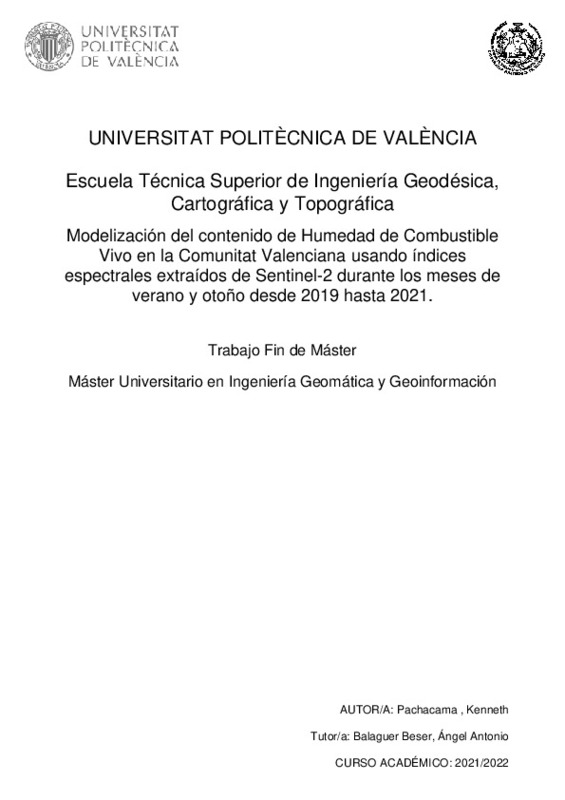JavaScript is disabled for your browser. Some features of this site may not work without it.
Buscar en RiuNet
Listar
Mi cuenta
Estadísticas
Ayuda RiuNet
Admin. UPV
Modelización del contenido de humedad de combustible vivo en la Comunitat Valenciana usando índices espectrales extraídos de Sentinel-2 durante los meses de verano y otoño desde 2019 hasta 2021
Mostrar el registro completo del ítem
Pachacama Vallejo, KR. (2022). Modelización del contenido de humedad de combustible vivo en la Comunitat Valenciana usando índices espectrales extraídos de Sentinel-2 durante los meses de verano y otoño desde 2019 hasta 2021. Universitat Politècnica de València. http://hdl.handle.net/10251/186774
Por favor, use este identificador para citar o enlazar este ítem: http://hdl.handle.net/10251/186774
Ficheros en el ítem
Metadatos del ítem
| Título: | Modelización del contenido de humedad de combustible vivo en la Comunitat Valenciana usando índices espectrales extraídos de Sentinel-2 durante los meses de verano y otoño desde 2019 hasta 2021 | |||
| Otro titulo: |
|
|||
| Autor: | Pachacama Vallejo, Kenneth Ricardo | |||
| Director(es): | ||||
| Entidad UPV: |
|
|||
| Fecha acto/lectura: |
|
|||
| Resumen: |
[ES] Se entiende por Humedad de combustible vivo (HCV), al contenido de agua que existe en cualquier tipo de vegetación viva y aunque este parámetro puede ser muy variable dependiendo del tipo de vegetación y factores ...[+]
[EN] Live fuel moisture content (LFMC) is understood as the water content that exists in any type of live vegetation and although this parameter can be highly variable depending on the type of vegetation and environmental ...[+]
|
|||
| Palabras clave: |
|
|||
| Derechos de uso: | Reserva de todos los derechos | |||
| Editorial: |
|
|||
| Titulación: |
|
|||
| Tipo: |
|
recommendations
Este ítem aparece en la(s) siguiente(s) colección(ones)
-
ETSIGCT - Trabajos académicos [494]
Escuela Técnica Superior de Ingeniería Geodésica, Cartográfica y Topográfica







